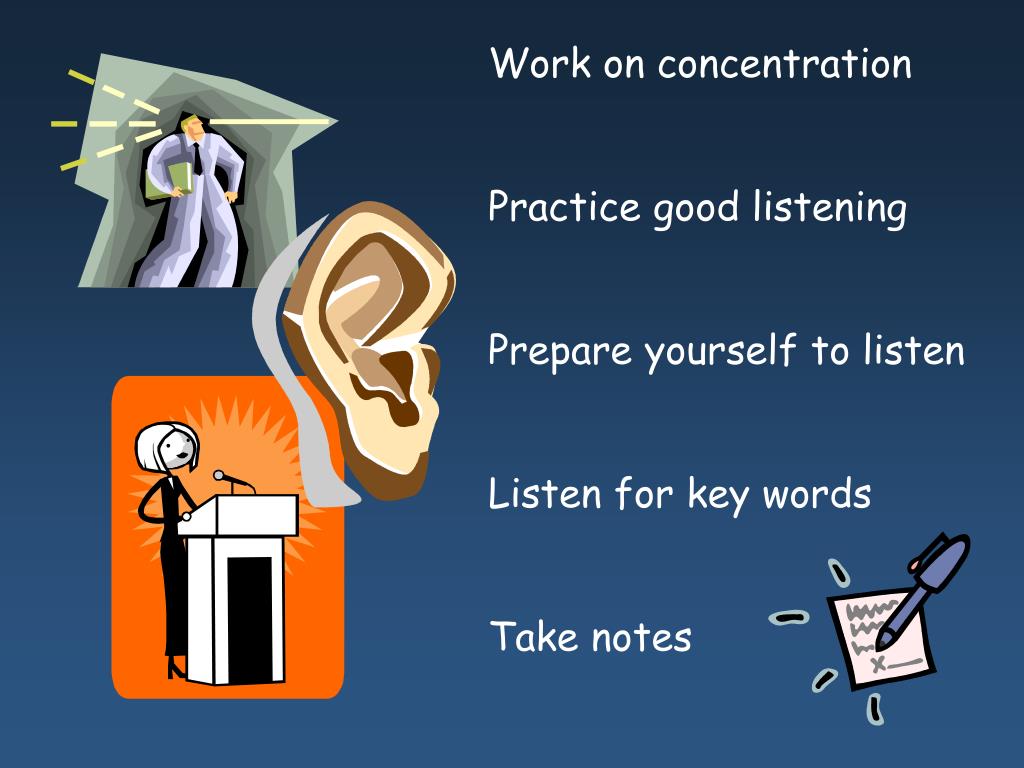

The average deaf person has an 8th grade education. Hard to be a signing deaf in society because its not practical and there are social pressures. Speaking deafs have hearing aids and can speak (Miss America for example). Deaf Culture Signing deafs have a deaf culture and use American Sign Language. Research and teaching- hard to hire people, pay is low, academic side is empty. Private Practice- second most common place for audiologists to work (25-30%). Educational ''- helps children in school systems 10 mil American workers work in noisy jobs everyday. Industrial '' - works in occupational areas- military, airlines, textiles, car manufacturing, lumber, steel, petroleum, mining. For example, we are accustomed to the sounds of airplanes, lawn mowers, furnace blowers, the rattling of pots and pans, and so on. We are surrounded by sound most of the time. Rehabilitative ''- train people to listen better Hearing Hearing is an accidental and automatic brain response to sound that requires no effort.

old person, tumors, immunodeficiency diseases, medically related hearing office. Acoustics- building technology- sound technology engineers Areas of Specialization -Medical Audiology- in the hospital. Special Education- Create a individual education plan for impaired children- helping them to learn to listen/speak Hearing and listening are both required for communication, but the difference between hearing vs. This realization has helped to explain, in part, the mechanisms of some forms of age-related hearing loss. Pediatrics- also helpful in referring children Indeed, the evidence suggests that hearing in general and listening, in particular, require the ear, the auditory midbrain, the deep brain, and the cortical forebrain to work together to inhibit some auditory stimuli while amplifying others. Otolaryngology (ENT diseases) these doctors are helpful Universal newborn hearing screenings- pretty much every hospital screens for hearing impairment at birth. She explains the role these functions play in our mental health. 20-30% of patients are referred by clinicians. Hearing is a form of sensory input whereas listening is a way to form connections with other people, according to Workman. Related Fields -Medicine- primary care clinics- the base of the system is primary care clinics. Health Problems Hearing is the 4th most commonly reported health problem, behind arthritis, hypertension, and heart disease. Studies show that there are growing old age populations everywhere, like Japan, Italy, and Germany.


Hearing loss can occur for different reasons, the main being:īy 2050 the older population will double in size. 65+ shows a decline in hearing typically. Prevalence of Hearing Loss The prevalence of hearing loss goes up with age. Rehabilitation deals with auditory training, speechreading, and communication therapy. Hearing refers to one’s ability to perceive sounds, by receiving vibrations through ears. listening, on the other hand, is to hear anything with careful attention. Evaluation, identification, and prevention of hearing loss.Ģ) Habilitation- using technology to overcome hearing impairment, like hearing aids, cochlear implants, assistive listening devicesģ) Rehabilitation- training people to listen better and speak retraining a deaf person since the range of human sounds is expansive the audiologist has to make the sounds meaningful. The process, function, or capacity of experiencing a sound is the definition of hearing.
Hearing vs listening professional#
The LSL early intervention professional will guide you to use specific strategies every day to make the best use of the hearing devices and to teach your child to listen and talk.Goals of an Audiologist 1) Identification. The pediatric audiologist will help your baby's brain grow and access sound through hearing aids or cochlear implants. You'll partner with specialists including a pediatric audiologist and an early intervention professional. How? With your help, along with technology and a support team. This means they can learn to listen and talk just like a child with typical hearing. When babies are diagnosed with hearing loss early and get the right hearing devices, sounds can go directly to their brain. While you may think we hear with our ears, hearing is really about the brain. As humans, our brains are "pre-wired" to learn spoken language by listening. Most likely, you learned to talk by listening to your family and those around you. It offers a set of strategies and principles to teach babies and young children with hearing loss spoken language through listening. What is LSL? LSL stands for Listening and Spoken Language. What to Look for in an LSL Professional.Meet the Early Intervention Professionals.


 0 kommentar(er)
0 kommentar(er)
